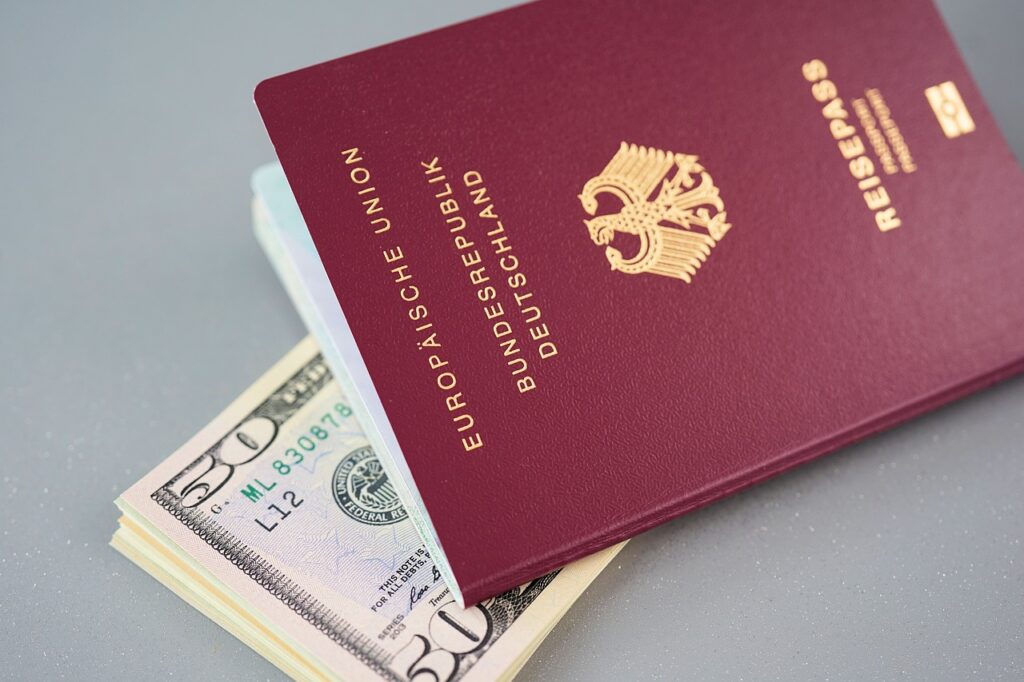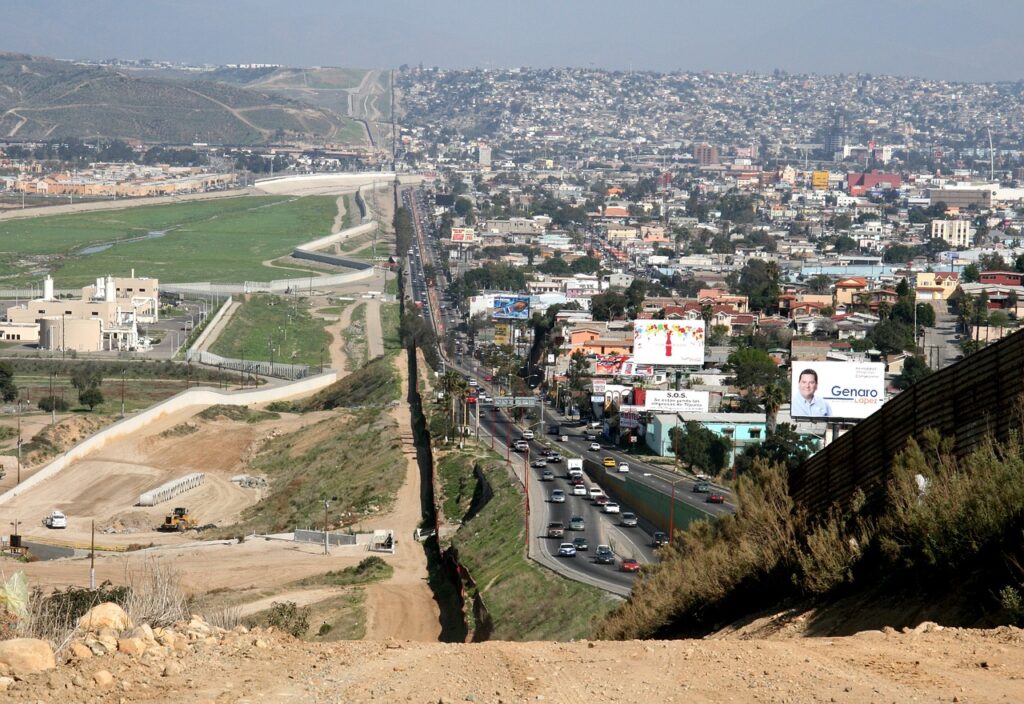Visa Guide
What Do You Need To Cross Into Canada By Land?
Planning a trip to Canada by land? Learn about the essential identification documents, vehicle requirements, travel with children, criminal record implications, travel documents for non-residents, bringing goods into Canada, medical requirements, traveling with pets, money and currency restrictions, and customs and border procedures. Prepare for a hassle-free crossing!
So you’re planning a trip to Canada, and you’re wondering what you need to cross into the country by land? Well, fret not, because we’ve got you covered! Whether you’re traveling for leisure or business, there are a few key essentials you must have to ensure a smooth border crossing experience. From proper identification and travel documents to declarations of goods, in this article, we’ll walk you through all the necessary requirements and tips for crossing into Canada by land. Get ready to embark on your Canadian adventure hassle-free!
Identification Documents
When crossing into Canada by land, you will need to ensure you have the proper identification documents with you. The following are valid identification documents that you can use:
Valid Passport
A valid passport is the most widely accepted and recognized identification document for crossing into Canada by land. It is recommended to have a passport with at least six months of validity remaining. This applies to both adults and children.
NEXUS Card
If you frequently travel between Canada and the United States, a NEXUS card can expedite your border crossing. The NEXUS program allows pre-screened, low-risk travelers to have expedited processing at designated ports of entry. This card can be used for land, air, and sea travel.

Enhanced Driver’s License
Certain states in the United States offer enhanced driver’s licenses that can be used as a form of identification for crossing into Canada by land. These licenses are equipped with additional security features and can be used to prove both identity and citizenship.
Trusted Traveler Program Card
If you are a member of a trusted traveler program, such as the Global Entry or SENTRI program in the United States, you may have a Trusted Traveler Program Card. This card allows for expedited processing at designated border crossings.
⚠️ Beware of Jobs and VISA Scams – Read our guides carefully and APPLY directly using our links and buttons. Application is free! Don’t pay anyone claiming to be a travel or Job Agent!
Vehicle Requirements
In addition to identification documents for yourself, you will also need to ensure that your vehicle meets the necessary requirements for crossing into Canada by land. The following are important vehicle-related considerations:
Vehicle Registration
It is crucial to have a valid vehicle registration for the vehicle you are using to cross into Canada. This document serves as proof of ownership and registration, and you should have it readily available when crossing the border.
Proof of Insurance
You must have proof of insurance for your vehicle when crossing into Canada. This can be in the form of a valid insurance card or policy document. It is essential to ensure that your insurance coverage extends to Canada.
Importing a Vehicle
If you are bringing a vehicle into Canada that is not a rental or leased vehicle, additional documentation may be required. You may need to provide proof of ownership, such as a vehicle title or bill of sale, as well as any necessary import permits or documents.
Motorcycles and Off-Road Vehicles
If you are crossing into Canada on a motorcycle or off-road vehicle, additional requirements and regulations may apply. It is important to check with the Canadian border authorities to ensure that you have all the necessary documents and meet the requirements for your specific vehicle.

This image is property of pixabay.com.
Traveling with Children
If you are crossing into Canada with children, there are specific requirements and documentation that you need to be aware of. The following are important considerations when traveling with children:
Consent Letters
If you are traveling with a child who is not your own, it is highly recommended to have a consent letter from the child’s parents or legal guardians. This letter should outline the details of the trip and provide permission for you to travel with the child.
Proof of Custody
If you are traveling with a child and you have sole custody or legal guardianship, it is important to carry documentation to prove your custody rights. This can include court orders or notarized letters confirming your legal status as the child’s guardian.
Birth Certificates
It is advisable to carry birth certificates for all children traveling with you, regardless of your relationship to them. This documentation can help verify the child’s identity and may be required when crossing the border.
Criminal Record
If you have a criminal record, it is crucial to understand the requirements and implications when crossing into Canada. The following are important considerations for individuals with a criminal record:
Temporary Resident Permit
Individuals with a criminal record may require a Temporary Resident Permit (TRP) to enter Canada. A TRP allows individuals who are inadmissible to Canada due to their criminal record to come to the country for a specific purpose and duration.
Criminal Rehabilitation
If you have completed your sentence and a certain period of time has passed without committing any further offenses, you may be eligible for criminal rehabilitation. This process allows individuals with a past criminal record to become admissible to Canada.
Legal Opinion Letter
In certain cases, it may be beneficial to obtain a legal opinion letter from a Canadian immigration lawyer. This letter can provide guidance on your admissibility to Canada, taking into account the specifics of your criminal record and current circumstances.

This image is property of pixabay.com.
Travel Documents for Non-Residents
If you are a non-resident planning to visit or pass through Canada, you may need to obtain specific travel documents. The following are important considerations for non-residents traveling to Canada:
Visa Requirements
Depending on your country of citizenship, you may need a visa to enter Canada. It is important to check the visa requirements and apply in advance if necessary.
eTA (Electronic Travel Authorization)
Citizens of certain countries are required to obtain an Electronic Travel Authorization (eTA) before traveling to Canada. This is an electronic document that is linked to your passport and is valid for multiple entries over a set period.
US Permanent Residents
If you are a permanent resident of the United States, you will need to present your Permanent Resident Card (Green Card) when crossing into Canada. This serves as proof of your status as a permanent resident.
Temporary Residents
If you are in Canada on a temporary basis, such as a student or foreign worker, you will need to present the necessary documentation, such as a study permit or work permit, when crossing the border.
Bringing Goods into Canada
When crossing into Canada, it is important to understand the rules and regulations regarding the goods you can bring with you. The following are important considerations for bringing goods into Canada:
Declare All Goods
It is essential to declare all goods that you are bringing into Canada, regardless of their value or origin. This includes items that you are bringing for personal use, gifts, or items for resale.
Restricted and Prohibited Items
Certain items are restricted or prohibited from being brought into Canada. These can include firearms, weapons, certain food products, controlled substances, and endangered wildlife products. Familiarize yourself with the specific regulations to avoid any issues at the border.
Duty and Taxes
Depending on the value and nature of the goods you are bringing into Canada, you may be required to pay duty and taxes. This can include goods and services tax (GST), harmonized sales tax (HST), or customs duties. Be prepared to pay any applicable fees when crossing the border.
Firearms and Weapons
Bringing firearms and weapons into Canada is tightly regulated. If you plan to bring firearms or weapons for hunting, sport shooting, or any other purpose, you must follow the specific regulations and obtain the necessary permits in advance.

This image is property of pixabay.com.
Medical Requirements
When traveling to Canada, it is important to consider any medical requirements and preparations. The following are important considerations for medical requirements:
Prescription Medications
If you are bringing prescription medications with you to Canada, it is advisable to carry them in their original packaging. It is also helpful to have a copy of the prescription or a note from your healthcare provider explaining the need for the medication.
Medical Documentation
If you have any specific medical conditions or require medical devices or equipment, it is helpful to have supporting documentation from your healthcare provider. This can help ensure a smooth entry into Canada and assist in case of any medical emergencies.
Travel Insurance
While not a requirement, it is highly recommended to have travel insurance that provides coverage for medical emergencies when traveling to Canada. This can help protect you financially in case of unforeseen medical expenses.
Pets and Animals
If you plan to bring pets or animals with you when crossing into Canada, there are regulations and requirements that need to be met. The following are important considerations for traveling with pets and animals:
Pet Identification
Ensure that your pets have proper identification, such as collars with tags or microchips. This identification should include your contact information and ideally indicate that your pet is up to date on vaccinations.
Documentation
When traveling with pets, you may need to provide documentation such as a pet health certificate issued by a veterinarian. This certificate verifies that your pet is healthy and has received necessary vaccinations.
Quarantine Regulations
Check if there are any quarantine regulations or restrictions for the type of pet or animal you are bringing into Canada. Some animals, such as certain species of birds or reptiles, may require additional permits or quarantine periods.
Service Animals
If you have a service animal accompanying you, ensure that you have the necessary documentation to prove their status as a service animal. This can include a letter from a healthcare professional or an identification card.
Money and Currency
When traveling to Canada, it is important to be aware of the rules and restrictions regarding currency and money. The following are important considerations for money and currency:
Currency Restrictions
There are no limits on the amount of money you can bring into Canada. However, if you are carrying more than CAD 10,000 or its equivalent in foreign currency, you must declare it to the appropriate authorities upon entry.
Currency Exchange
It is advisable to exchange your currency to Canadian dollars before arriving in Canada. You can do so at banks, currency exchange offices, or using automated banking machines (ATMs) upon arrival.
Carrying Large Amounts of Cash
If you are carrying a large amount of cash, it is essential to take necessary precautions to keep it secure. Consider using a money belt or keeping it in a safe place within your luggage. Always be mindful of your surroundings and ensure the safety of your money.
Customs and Border Procedures
Understanding the customs and border procedures when crossing into Canada can help ensure a smooth and hassle-free entry. The following are important considerations for customs and border procedures:
Border Wait Times
When planning your trip, it is helpful to check the current border wait times. This can give you an idea of the potential delays at the border and allow you to plan your travel accordingly.
Customs Declaration
When crossing into Canada, you will need to complete a customs declaration form. This form requires you to declare any goods you are bringing with you, including their value. Be honest and accurate on your declaration, as false information can lead to penalties.
Trusted Traveler Programs
If you are a member of a trusted traveler program, such as NEXUS or Global Entry, you can take advantage of expedited processing at designated border crossings. These programs can help save time and streamline your entry into Canada.
Canadian Border Services Agency (CBSA)
The Canada Border Services Agency (CBSA) is responsible for managing the border and enforcing customs and immigration regulations. It is important to follow the instructions and guidelines provided by CBSA officers to ensure a smooth crossing.
Crossing into Canada by land requires the proper identification documents, compliance with vehicle requirements, understanding regulations for traveling with children, considering any criminal record implications, and being aware of travel documents for non-residents. Furthermore, it is crucial to abide by regulations for bringing goods into Canada, fulfill medical requirements, follow guidelines for traveling with pets, adhere to currency restrictions, and understand customs and border procedures. By being well-prepared and knowledgeable about these various aspects, your journey to Canada by land can be an enjoyable experience.
Disclosure: Our content is reader-supported. If you click certain links, we may earn a commission. Learn more about our funding and editorial process.

